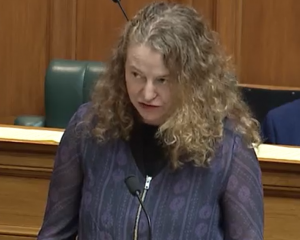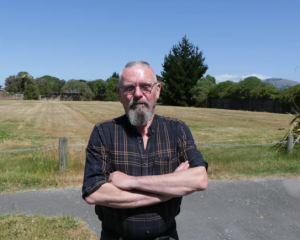Government earthquake experts held back forecasts of a massive aftershock for Christchurch following the magnitude 4.9 Boxing Day jolt because they didn't want to alarm the already traumatised population.
The admission came as GNS scientists gave evidence at the close of the third day of hearings of the Royal Commission inquiry into the Canterbury earthquakes.
Under cross-examination by counsel for earthquake victims' families this afternoon, GNS scientist Dr Kelvin Berryman admitted information was withheld from the public, on advice from social scientists scared for the beleaguered city's collective mental health.
Christchurch lawyer Marcus Elliott, counsel assisting the interests of victims' families at the hearings, said that after February 22, GNS made public statements warning of the possibility of an aftershock of one magnitude less than the 6.3 magnitude which resulted in the deaths of 182 people.
He then asked the panel of four scientists if they considered issuing the same warning after the December 26 shake.
Mr Elliott asked: "If someone had come to GNS after Boxing Day and said, 'we want to give people the Christchurch a people of understanding if this one less magnitude earthquake occurred under the city', could GNS have calculated the likely ground forces and given people an understanding of what they might expect?''
The panel confirmed they could provide such information.
But Dr Berryman admitted the GNS team were "very aware'' of the issue and had grappled over the merits of making such a public warning.
He said: "I think this line of questioning is very valuable. In that period of December and early January we were very aware of where would this magnitude six occur if it was to occur.
"There were five or six obvious scenarios where that future earthquake might occur. The worse possible case was directly under the city. Other possibilities were out in the southwest around Wigram, or Lincoln, and areas at Rolleston, and way out at Hororata.
"But that's not particularly helpful in terms of advice going forward. You can be particularly optimistic or particularly pessimistic.
"It wasn't really a reasonable approach to try and do that at that time because of the range of places where that magnitude six might occur.
"We didn't want to alarm unnecessarily.''
His colleague at GNS Science, Dr Terry Webb said the idea of a warning was deemed "unhelpful''.
Dr Webb admitted: "In the first couple of weeks (after the Boxing Day shake), social science advice was basically that we've got a traumatised population and what can you do to help them cope best, and that really was to get them coping with aftershocks.
"They had a need and a right to know, and that's why we readily talked about the possibility of a six, so that certainly wasn't hidden.
"But what was thought of as unhelpful at the time, was talking about the possibility of an event bigger than Darfield (magnitude 7.1 on September 4) itself, in terms of magnitude.''
The first of 11 hearings in the inquiry, sitting at St Teresa's Parish church hall in Riccarton, Christchurch, continues and is due to conclude tomorrow.











